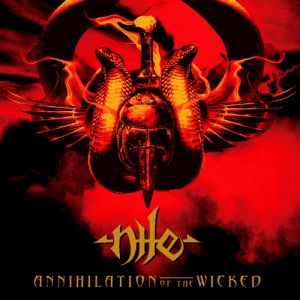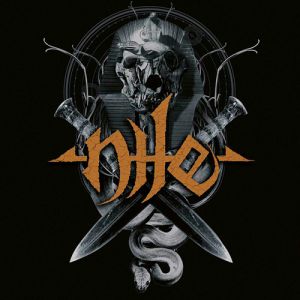Sebek, Sochet, Suchos. Dread Lord of the Marsh. He Who Crawleth Amongst the Sacred Waters. And Devoureth the Flesh of That Which is Sacrificed unto Him. Tua Ashemu. Tua Ashemu. Rekhes Au Sebek. Rekhes Au Sebek. Tua Ashemu. Tua Ashemu. Sebek, Neter, Ashemu. Whose Teeth Rendeth and Teareth With Terrible Violence. Restore the Eyes of the Dead. Collect Their Skulls. Join Their Bones Together Again. Lord of the Temple of the Mount of Sunrise. Open the Way unto the Underworld. Cause the Dead to Rise to New Life. Bring the Child Horus upon the Throne of Osiris. [Sebek was the principal crocodile god in Ancient Egypt. In primitive, pre-dynastic times, during seasons when the canals dried op, the crocodile wandered the fields at will, killing and eating whatever or whoever crossed its path. The Egyptians came to regard the crocodile as a personification of the powers of evil and death, and they associated it with the demonic aspect of the got Set. I was unaware until researching this song that the species known as the Nile crocodile is one of the very few animals on our planet that actively hunts and preys upon humans with specific (as opposed to incidental) intent. In later times, according to Herodotus in his "History (Book 2)", crocodiles became sacred in parts of Egypt such as at Shedet (called "Crocodiliopolis" by the Greeks) where a crocodile was kept in a sanctuary lake alongside Sebek's Temple. The sacred crocodile (adorned with crystal and gold earrings and bracelets on its forepaws) was said to be Sebek incarnate. Temple visitors brought food offerings, which the priests of Sebek fed to the sacred crocodile. If Sir Waalis Budge is to be believed, this also included on special religious occasiona infansa and small children. Upon teh dacred crocodile's death, it was embalmed and entombed in a sacred vault. The crocodile plays an important part in Egyptian mythology as both friend and enemy of the dead god Osiris. He was also a protector and helper of the newly dead, playing a role in Horus' ascension to new life. In later Egyptian mythology, the crocodile came to be regarded as a symbol of the Sun, and was associated with the sun-god, Ra, forming the composite god Sebek-Ra. In Egyptian art, Sebek is portrayed as a crocodile-headed man waring either a solar disk encircles with the uraeus or a pair of ram's horns surmounted by a disk and a pair of plumes. A small pair of horms is sometimes shown above the large horns. Variants of the name are Sebeq, Suchos and Sobek.]

